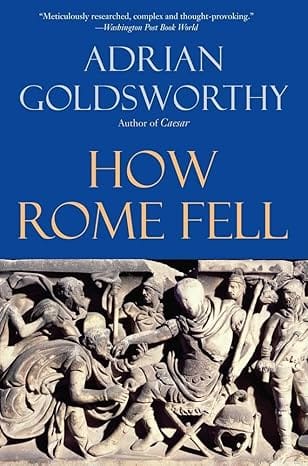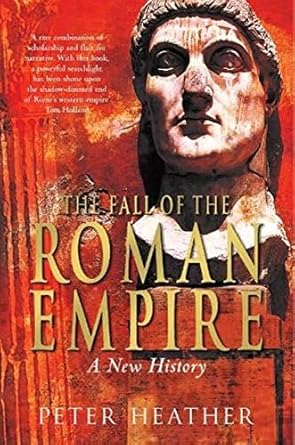The Long View: Apocalypses: Prophecies, Cults and Millennial Beliefs through the Ages

Ignore doomsday at your peril.
Apocalypses: Prophecies, Cults and Millennial Beliefs through the Ages
by Eugen Weber
Harvard University Press, 2000
294 pages, US$16.95 (Paperback)
ISBN 0-674-00395-0
The University of Toronto asked Eugen Weber, the noted emeritus professor of modern European history at UCLA, to give the 1999 Barbara Frum Lecture on the topic of “fins de siècle.” This seemed reasonable enough, what with the end of the 20th century coming up and the fact that he had already written a book entitled “Fin de Siècle.” We must imagine his horror, however, as his preparation for the lecture revealed the matter did not allow of pluralization. There was only one fin de siècle, something that happened at the end of the nineteenth century and mostly in France. Western society had rarely taken much notice of century years before the 18th century. Even the kinds of millennial excitement that attended the ends of the nineteenth and twentieth centuries were different from each other. The apocalyptic atmosphere at end of the 19th century was, to a large degree, an aspect of the period’s famous “decadence.” There was probably at least as much decadence in the colloquial sense during the 1990s as during 1880s. Back in the Paris of the real fin de siècle, however, decadence was high theory.
Happily freed of the media myth that all dates ending in “00” have incited millennium-mad masses to howl at the moon, Dr. Weber went on to produce this very engaging survey of the chief apocalyptic themes in Western history. I have never seen it done better. The author is particularly successful in demonstrating the continuing importance of millennialism for the study of intellectual history. Apocalyptic thinking is obviously relevant to an understanding of John of Leiden and the Reverend Jim Jones. It is also, however, just as necessary for a full understanding of Isaac Newton and Joseph Priestley, or even of Balzac. Eschatological scenarios informed the decisions of the participants in the English Civil War. They may also, more debatably, have had a hand in deciding that the First World War started when and how it did. The widespread opinion of the middle 20th century that millennialism was a historical curiosity has been pretty thoroughly refuted. We ignore Doomsday at out great peril.
Though the presentation in “Apocalypses” is roughly chronological, the author realizes that there can be no “history” of millennialism. The world seems likely to end in somewhat different ways to the people of different cultural periods, despite much continuity of language, and even of systematic eschatological theology. However, every period does seem to have a characteristic millennialism of some sort. Also, the persistence of detail is striking, all the more so because the specifics of the apocalyptic scenarios flip back and forth between natural and supernatural. For instance, the Book of Revelation is full of things that fall from the sky, notably the star “Wormwood” (Rev. 8: 10,11). This was a ludicrous notion in the Aristotelian physics of the first century, of course, and probably a bit of an embarrassment for Christian apologists. In contrast, the idea that the world may be in imminent peril of asteroidal impact was common by the end of the 20th century, due in large part to the dramatic Alvarez hypothesis about the Cretaceous die-off. Long before the dinosaur fashion, however, 20th century millenarians had appropriated pretty much the same idea as a gloss on the scriptural text. Now Weber tells us that, in 1773, a lecture to the Academy of Sciences in Paris on the menace of cometary flybys occasioned civil disorder. In a way, this continuity is comforting.
Readers generally familiar with the history of apocalyptic thinking in English-speaking countries will find “Apocalypses” particularly valuable for its attention to the francophone world. This is one of those books that reminded me of the full extent of my ignorance. I had imagined that Jansenists, members of a rigorous but condemned Catholic sect that had attracted minds on the order of Pascal’s, were essentially Calvinists without the whimsy. Only now do I learn about their ecstatic and visionary side, and how their long persecution drove them to view themselves as an elect living at the close of the age. I had been aware that the Métis rebellions in nineteenth-century Canada had an eschatological element, even a specifically Catholic eschatological dimension. A feature that you could not have made up, however, was the belief of the Métis leader, Louis Riel, that the Vatican would move to Canada. Last but not least, we are also treated to a summary of the French fin de siècle, with its colorful combination of Satanists, popular science, eschatological communism and Restoration-minded monarchists. What had our own etiolated flutters about the Y2K bug to offer in comparison?
Since the territory covered in this book is beyond anyone’s expertise, there are nits to pick. For instance, the authors says about the eschatology of St. Augustine of Hippo: “Since Christ’s coming, regeneration no longer depended on cosmic revolution or explosive revolution, but on individual effort to salvation; not on divine destruction, but on human decisions and effort.” While this summary is not entirely wrong, we should remember that Augustine is the father, not just of progress, but also of predestination. (This is not a coincidence.) To take an issue of social history, it is hard to see how, after reviewing all the odd dates that have excited millennial attention these last 2000 years (1260, 1484, 1844), the author can still link millennialism with the rise of numeracy. If anything, it’s dates like 1900 and 2000 that are the no-brainers, and they fell in literate centuries. These, however, are small matters that simply reflect the opinions found in the secondary sources from which a survey like this is necessarily written.
Just as “Apocalypses” does not purport to be a comprehensive history of millennialism, it also does not attempt to formulate a general theory about it. Weber is duly suspicious of the assumption by E.J. Hobsbawm and Norman Cohn that millenarian revolutionaries are really social revolutionaries suffering from false consciousness. The phenomena associated with millennial ideas are just too various for such an explanation to work, even as an approximation. Weber is obviously impressed, not just by the persistence of millennial thinking, but also by its uncanny, well, prescience. The age did not end with the planetary alignment of 1484, for instance, but the unity of the West did shortly thereafter, just at the moment when the horizons of the known world were exploding. He remarks about the flurry of Marian apparitions that occurred in the early 20th century (for some reason he calls them “Marial apparitions”) that the fire-and-brimstone prophecies they produced were “right on target.” St. Augustine may have been right when he said that signs of the end are present in every age. It is also true to say that those who pursue the millennium are not necessarily following a chimera.
Copyright © 2001 by John J. Reilly

Apocalypses : Prophecies, Cults and Millennial Beliefs Through the Ages By Eugen Weber



Comments ()